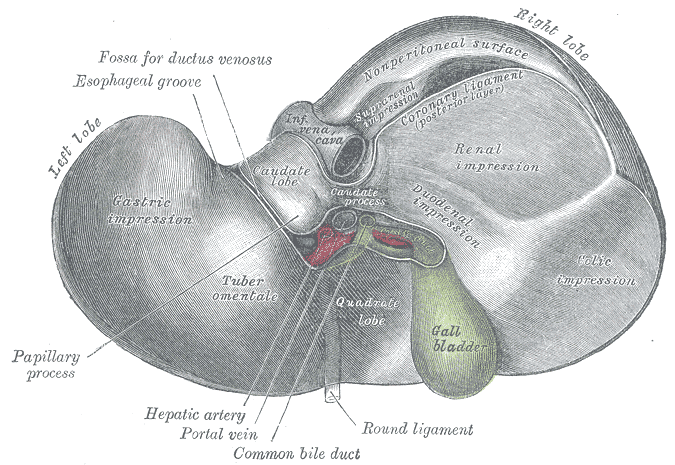 Should patients with Hepatitis C (HCV) with no evidence of cirrhosis undergo screening for hepatocellular carcinoma (HCC)? Is there any reason to check for HCC when the liver associated enzymes (LAEs) are normal?
Should patients with Hepatitis C (HCV) with no evidence of cirrhosis undergo screening for hepatocellular carcinoma (HCC)? Is there any reason to check for HCC when the liver associated enzymes (LAEs) are normal?
-Sandeep Mangalmurti, PGY-2
Commentary by Mike Poles MD, Associate Editor Clinical Correlations and Assistant Professor, Division of Gastroenterology
HCC continues to be one of the most common solid malignancies worldwide. Further, almost all cases of HCC occur in the background of a histologically-abnormal liver; approximately 90% of cases of HCC occur in the background of cirrhosis. It is important to note that cirrhosis due to any etiology can result in the development of HCC, though cirrhosis due to the viral hepatitides is the most common causes. In the Far East, where HBV is highly endemic, it is the most common cause of cirrhosis-related HCC. On the other hand, in the U.S. and Western Europe, HCV-related cirrhosis is more commonly associated with HCC development. As noted above, approximately 10% of patients with HCC do not have cirrhosis. Worldwide, the majority of those with HCC, but without cirrhosis, are infected with HBV, which is believed to be oncogenic, in part, by virtue of its ability to integrate its DNA into the human genome. HCV, on the other hand, is a RNA virus that is not capable of integration, but nonetheless can probably rarely cause HCC through its effect on hepatic inflammation and increased hepatocyte activation and proliferation. A recent article in the Annals of Internal Medicine (Ikeda K et al. Antibody to Hepatitis B Core Antigen and Risk for HCV-Related HCC: A Prospective Study. Ann Int Med. 2007;146(9):649-656) [http://www.annals.org/cgi/content/full/146/9/649]supports past studies that have shown that the development of HCC in HCV-infected patients may also be related to occult (latent) HBV infection in which the patient has been exposed to HBV and has integrated HBV in the liver, but no signs of infection in the periphery except for antibody against the HBV Core antigen. Thus, in HCV-infected patients without cirrhosis, the development of HCC may be related to co-existent HBV infection. So, is this risk of development of HCC in non-cirrhotic HCV patients enough to trigger us to perform surveillance for HCC? It is generally accepted that it is not cost-effective to screen for HCC if it is not expected to occur at a rate of greater than 0.2% per year (Di Bisceglie AM. Issues in Screening and Surveillance for Hepatocellular Carcinoma. Gastroenterology. 2004;127:S104-S107). This threshold is exceeded in patients with established cirrhosis, who have a rare of development of HCC at 1-4% per year. Since the risk of development of HCC in patients with chronic HCV, but without cirrhosis is very low (below 0.2% yearly), surveillance is not cost-effective in such patients. Whether this recommendation would be modified by the presence of anti HBV Core antibody requires more study.
In response to the second question, it is important to realize that patients with chronic HCV, but without abnormal LAEs can still have significantly abnormal liver histology, including development of cirrhosis, though the risk of development of significant liver damage is decreased in this population. Thus, evidence for the presence of cirrhosis is far more pertinent with regard to HCC risk than is the presence of abnormal LAEs.
